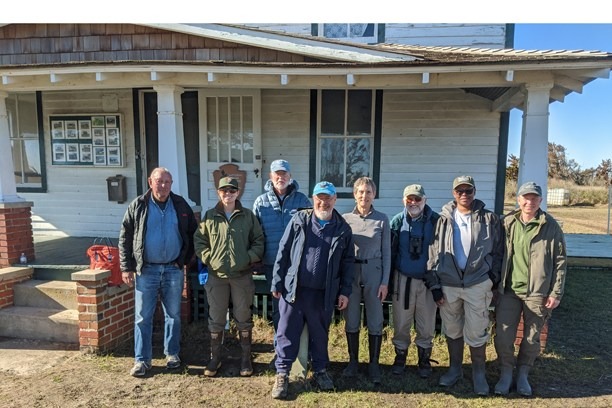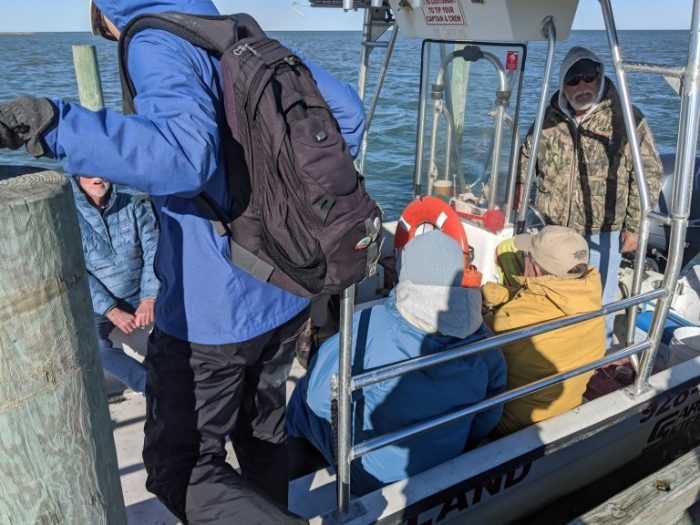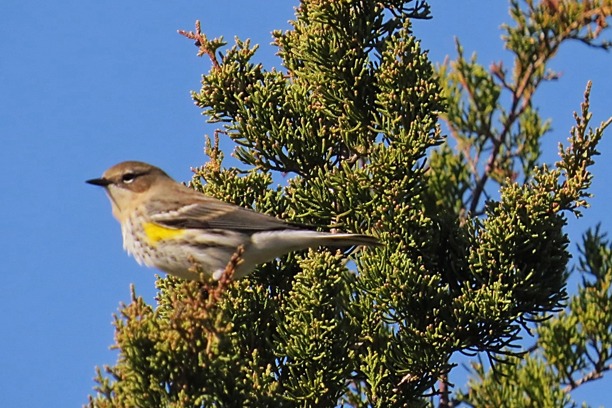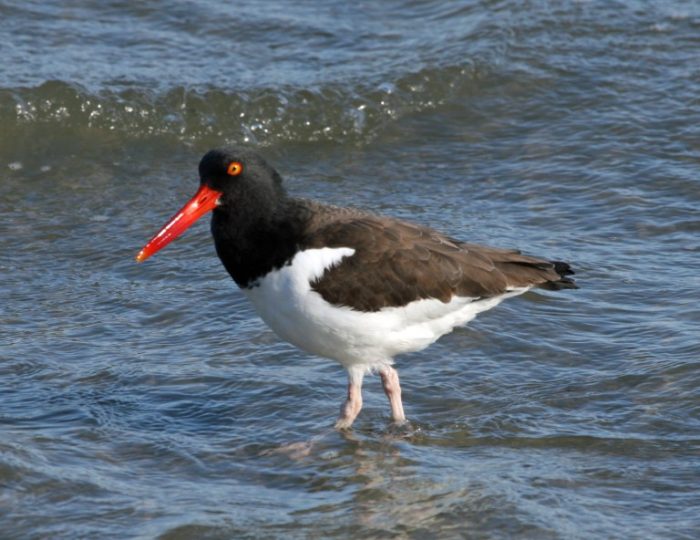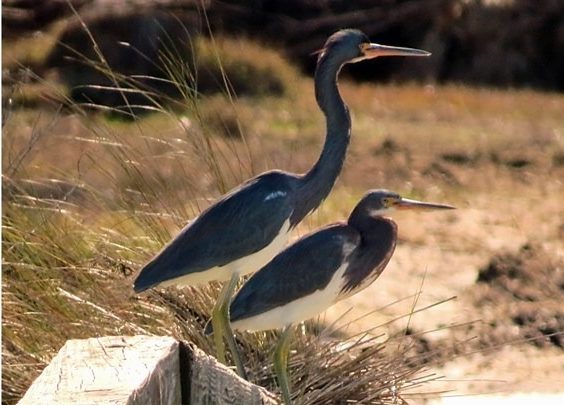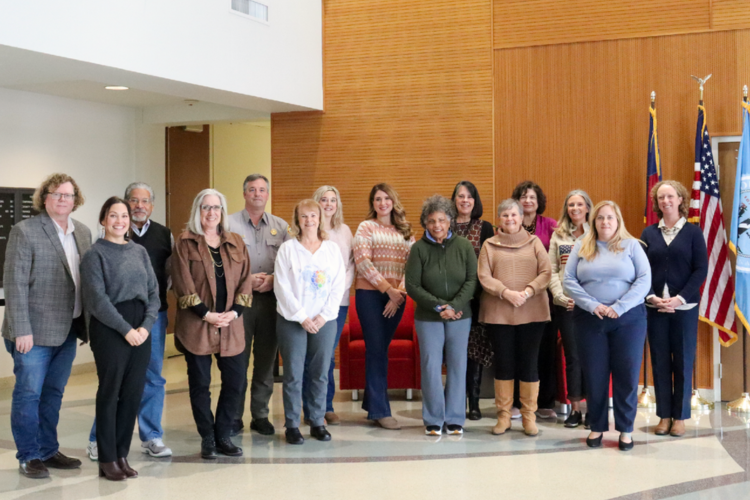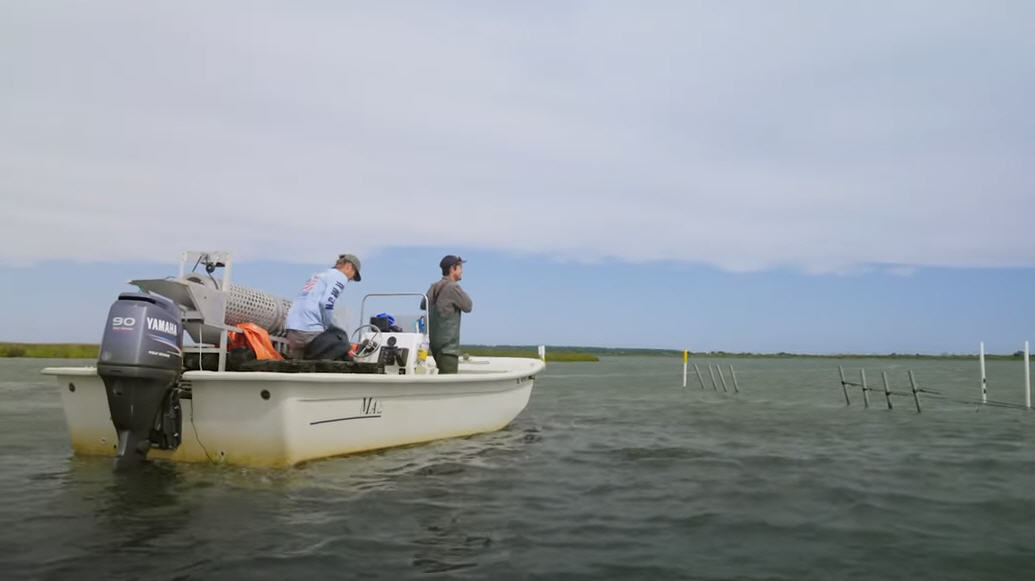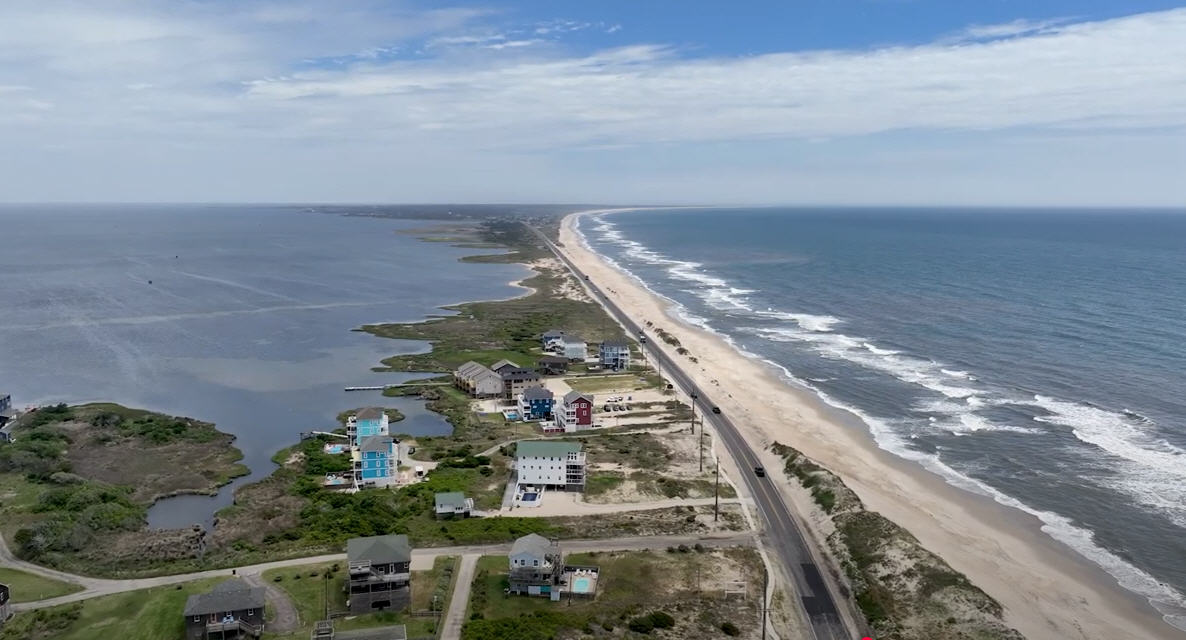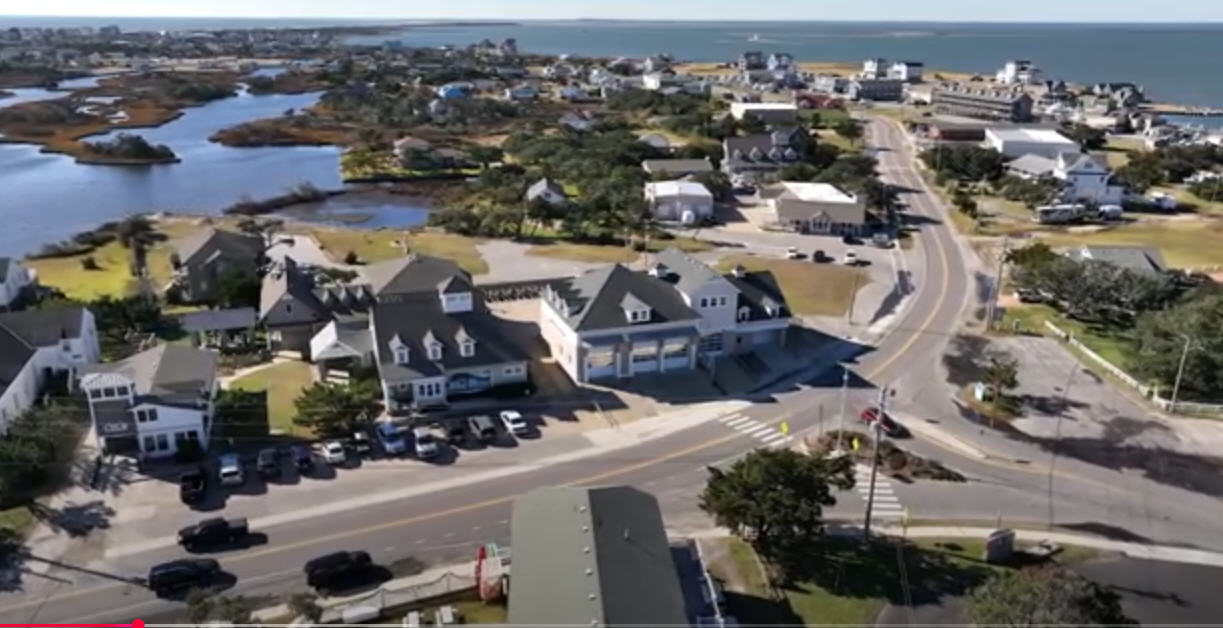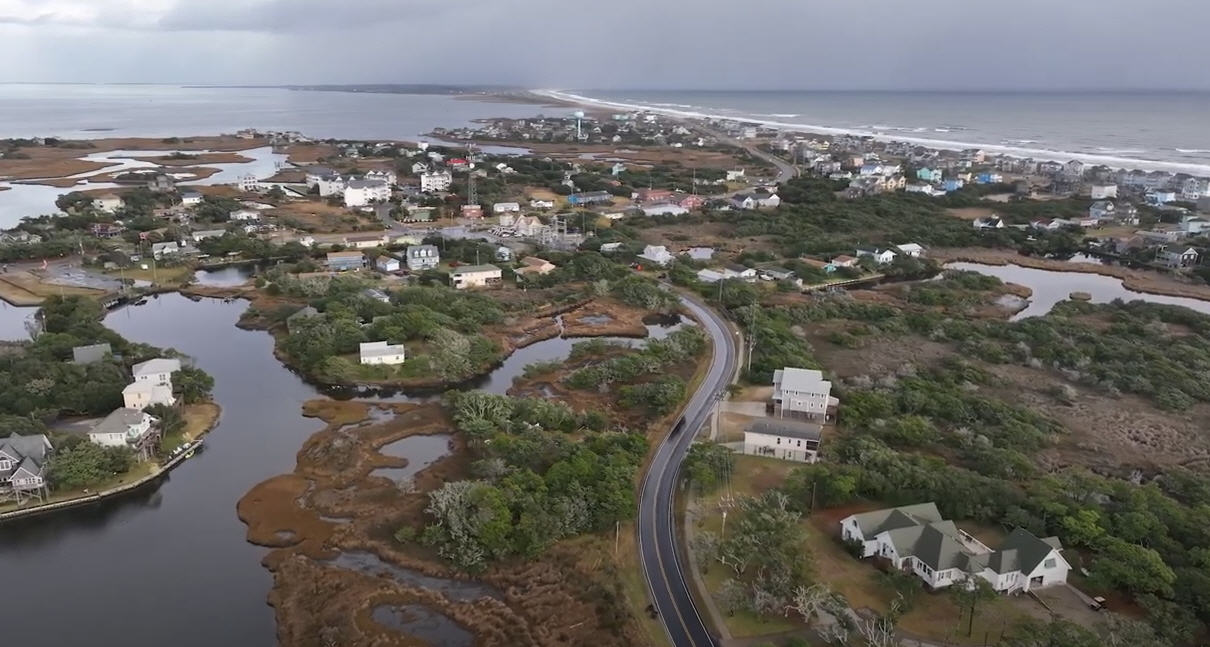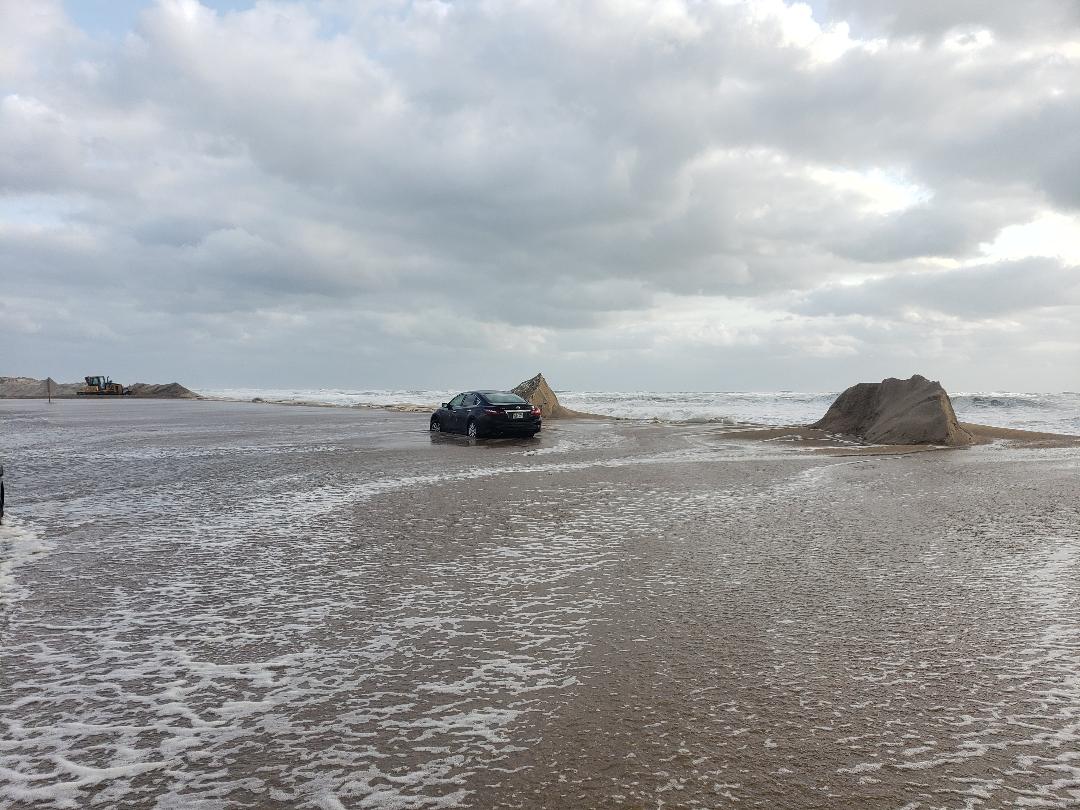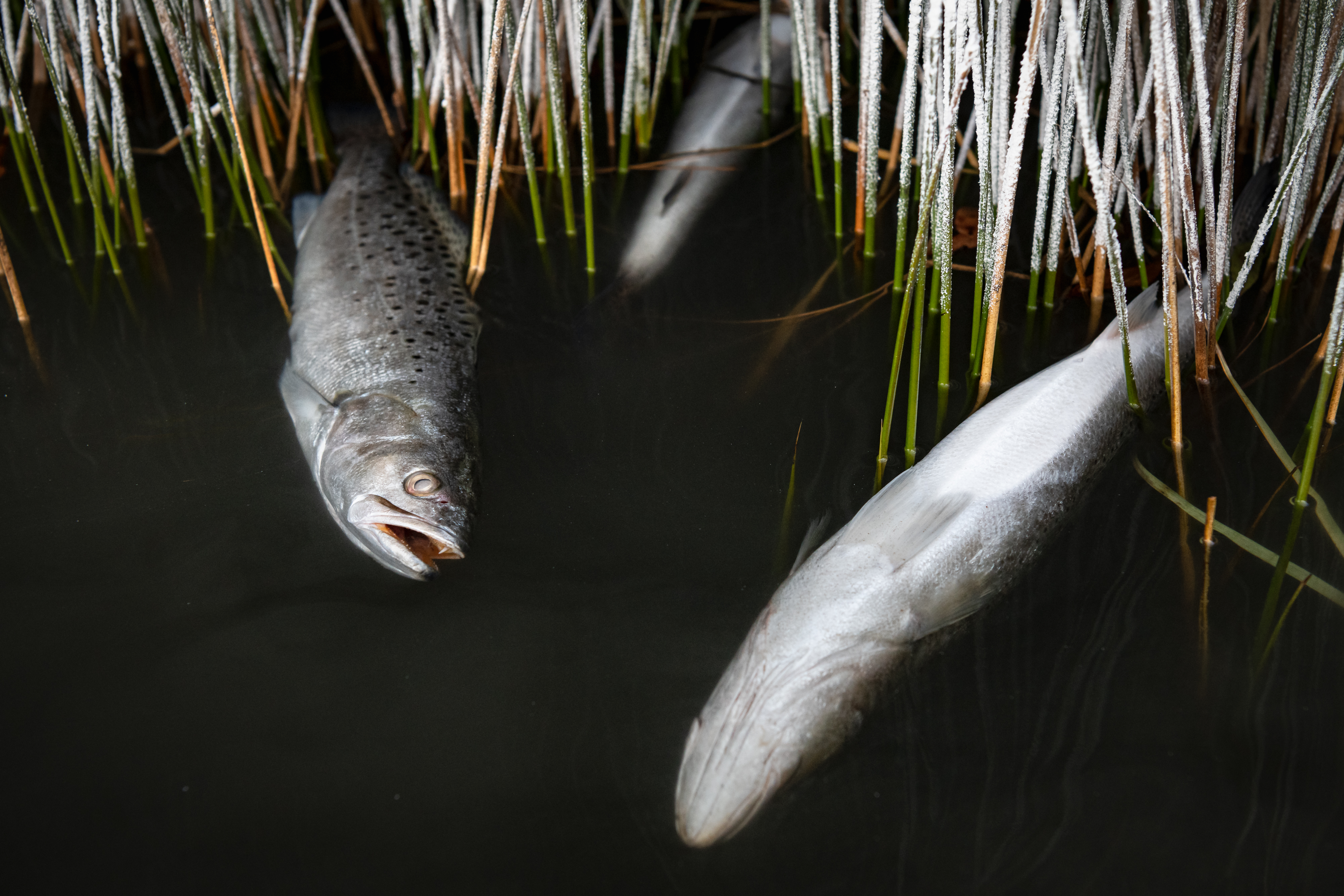Portsmouth Island Christmas Bird Count post-Hurricane Dorian

It takes about a half-hour by boat from Ocracoke’s Silver Lake harbor to the loading dock at Portsmouth village. A group of birders took the ride in the early morning of the last day of 2019 to participate in that island’s annual Christmas Bird Count. This census started in 1988 and attracts between 15 to 25 participants who walk the village and beach identifying species and counting the number of individuals seen or heard.
A total of 18–not all were hardcore birders–came over that morning. One was Allan Fairbanks, Chief Photojournalist for WCTI-TV NewsChannel 12 out of New Bern. He was intrigued by both Portsmouth and the idea it would make a good story to cover the activity and provide a story on how Hurricane Dorian impacted the 20-plus structures.
Usually, Captain Rudy Austin or his brother, Donald, of Portsmouth Island Boat Tours drops the birders off on the sound side to a long, empty dock, covered with broken shells dropped from above by Herring Gulls.
This year was different. Waiting to greet the group was Jeff West, Cape Lookout National Seashore’s superintendent and staffers, Lead Biological Science Technician Chelsey Stephenson and Evan Knight.
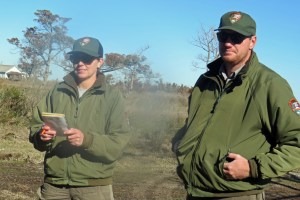
This count would be different in another way. The observers would get to see how changed the village was from the peaceful tranquility they experienced the previous December. Hurricane Dorian on Sept. 6 delivered to Portsmouth village the same 7-foot plus storm surge that devastated Ocracoke.
Portsmouth, part of Carteret County, was established in 1753 by the North Carolina Colonial Assembly and served as a point for shipping and fishing. Its heyday was the 1860s with a peak population of 860 residents who engaged in fishing and shipping and functioned as a lightering port, where cargo from ocean-going vessels could be transferred to shallow-draft vessels capable of traversing Pamlico and Core Sounds to the mainland. Over its two centuries, there was never any electricity or running water.
The village went into decline as alternative means for getting goods to the mainland were used. The last residents left in 1971 and it is now administered by the National Park Service as part of the Cape Lookout National Seashore.
Over the centuries, Portsmouth has withstood many hurricanes, some a direct hit such as Isabel in 2003. The 21 structures remaining today include a post office/store, church, school and a large lifesaving station. The rest are mostly homes and a few sheds. On the edge of the village, ocean side, are the NPS infrastructure buildings for a generator, maintenance and to store tractors.
West thanked everyone, saying the long-time data gathering from the bird counts gives people a good idea of what species spend the early winter there. Over the 30 years, nearly 200 species have been identified in varying numbers from year to year.
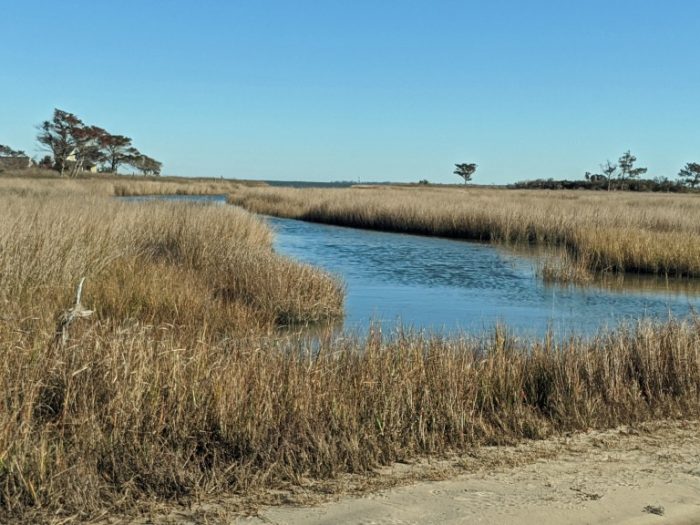
Heading into the village, which is still officially closed to visitors, the group stopped at the visitor’s center (the Salter-Dixon house) to leave some gear on the porch and get their coverage assignments. Flying overhead was a flock of White Ibis, and a Clapper Rail could be heard clucking in the marsh. Absent this year was a Merlin which often perches on a nearby tree, serving as a sentry.
The birders divided into four teams, two headed out to the dunes and beach, the other two carved up the village. West stayed with one of the village teams while Fairbanks filmed him talking about the damage and recorded the count activities.
Superintendent West is a high energy, hands-on, blue collar administrator who loves to talk Portsmouth. When Ocracoke islander Dave Frum retired several years ago as the village’s part time caretaker, he was not replaced due to budget constraints.

To make up for it, West often spends weekends there landscaping and doing small but much-needed repairs. He knows every building in the village and their status–none of it is good news.
After Dorian, West headed to the village by boat to assess the damage and take photographs. All of the structures were damaged and some may have to be torn down, he reported. Soon after, 68 volunteers and contractors, making up the National Park Service Incident Management Team, descended on the village for about three weeks to assist in cleaning up debris and stabilizing the buildings. The Arrowhead Fire Crew from Sequoia, Calif., sent 23 of their members.
The George Dixon house suffered so much damage that it may have to be demolished, West wrote in a report in the Doctor’s Creek Journal, recently published by the Friends of Portsmouth Island. He chronicled damage to all the structures in the village, two cemeteries and the infrastructure of the roads and docks.
And it wasn’t only the buildings that Dorian impacted. Fifty-four new inlets were carved into the Cape Lookout National Seashore. Almost all of them have since been filled in, but four remain.
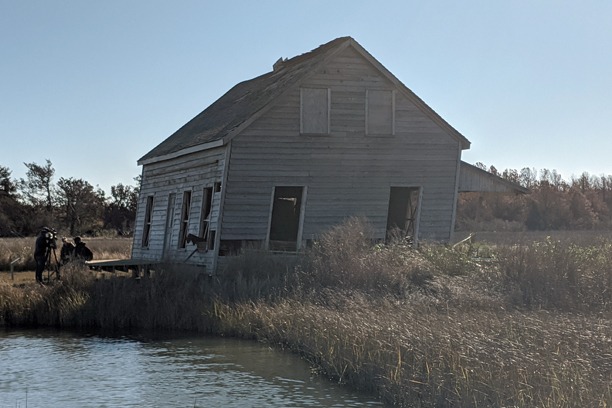
Birds in the village can vary from year to year, or for that matter week-to-week or even day-to-day. After heavy rains and there are puddles in the grass around the church, shorebirds such as Greater Yellowlegs, Dunlin and a few species of plovers can sometimes be seen foraging. Not this year. The only shorebirds were a flock of nine Killdeer that flew overhead. The large majority of shorebirds for this count were observed on the beach and along the inlet, including 300 Short-billed Dowitchers and 350 Dunlin. The ubiquitous Myrtle Warblers were present throughout in good numbers as usual.
The presence of birds in an area where they are relatively unscathed by human presence can bring surprises and this year yielded some. On the beach area of Ocracoke Inlet near Doctor’s Creek and the Methodist Church was a resting flock of American Oystercatchers and 60 were visible with the use of a high-powered spotting scope. Oystercatchers, normally solitary or in pairs, can congregate in large flocks like this in winter. Numbers like this are normally farther south and this count usually gets about 10 to 12 individuals. About an hour later, an adult Bald Eagle glided by that spooked them into flight which permitted a more precise count of 94 individuals. It’s nice when a Bald Eagle decides to help a Christmas Bird Count.
“Ocracoke and Portsmouth provided the perfect landscape for breaking in our new Muck boots!” said Elizabeth Cisne and Janeen Vanhooke jointly when asked about the day. They traveled from Nebraska and Chicago, respectively, to participate. “This was our second time at Portsmouth, and the show put on by the American Oystercatchers there was amazing. Never have we seen such a large flock of them in flight. Where’s the camera when we need it?”
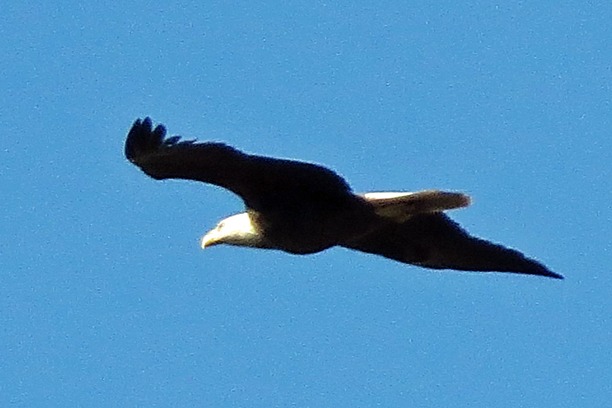
The other amazing feature of the count was the high number of Brown Pelicans. Tom and Susse Wright of Ocracoke ventured out to the beach on foot. There they encountered a long line of Brown Pelicans that they estimated to be 5,000. Again, that’s a large number to be in North Carolina this time of year. To pile on, the Ocracoke count that took place the day before, had nearly 2,000 pelicans. Brown Pelicans have been increasing in the mid-Atlantic and expanding into the Chesapeake Bay.
Since the temperatures have been seasonally much warmer and there is an adequate number of fish in the waters, these two factors may explain why so many are still in the region and not farther south.
Another high number was 154 Royal Terns. There is a large nesting colony of these terns on the dredge island at Big Foot Slough off Ocracoke where the Cedar Island and Swan Quarter ferries pass. Again, most winter in the warmer waters farther south.
Another special find was a Blue-headed Vireo, photographed in the village by Jeff Beane, another long-time veteran of the count. This was only the fourth time this vireo has been observed in the 30 years of the count.

Spending the last day of the year on Portsmouth Island located in this “watery part of the world,” to borrow from the title of Michael Parker’s well-written veiled novel about Portsmouth, is both an adventure and a memorable experience.
Portsmouth Island Christmas Bird Count list for Dec. 31, 2019:
Snow Goose 4
Brant 80
Gadwall 110
American Black Duck 74
Mallard 2
Redhead 7,000
Scoter sp. (unidentified species)
Bufflehead 2
Hooded Merganser 14
Red-breasted Merganser 6
Northern Gannet 80
Double-crested Cormorant 2,225
Brown Pelican 5,000
American Bittern 3
Great Blue Heron 2
Great Egret 5
Snowy Egret 4
Little Blue Heron 2
Tricolored Heron 7
Black-crowned Night Heron 7
White Ibis 58
Northern Harrier 10
Sharp-shinned Hawk 1
Cooper’s Hawk 1
Bald Eagle 2
Clapper Rail 17
Virginia Rail 1
Am. Oystercatcher 94
Black-bellied Plover 61
Killdeer 9
Willet 1
Yellowlegs sp. 18
Sanderling 200
Dunlin 350
Peep sp. (small sandpiper unidentified by species) 1
Short-billed Dowitcher 300
Ring-billed Gull 1547
Herring Gull 29
Great Black-backed Gull 58
Royal Tern 154
Black Skimmer 1
Belted Kingfisher 5
Northern Flicker 7
Eastern Phoebe 6
Blue-headed Vireo 1
House Wren 1
Sedge Wren 5
Marsh Wren 2
Carolina Wren 8
Golden-crowned Kinglet 1
Ruby-crowned Kinglet 1
American Robin 64
Gray Catbird 6
Northern Mockingbird 10
Cedar Waxwing 40
Common Yellowthroat 3
Palm Warbler 2
Yellow-rumped Warbler 378
Chipping Sparrow 3
Savannah Sparrow 4
Song Sparrow 2
Swamp Sparrow 1
Eastern Towhee 20
Northern Cardinal 3
Red-winged Blackbird 4
Eastern Meadowlark 5
